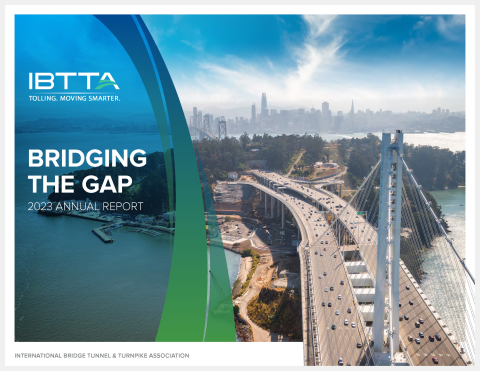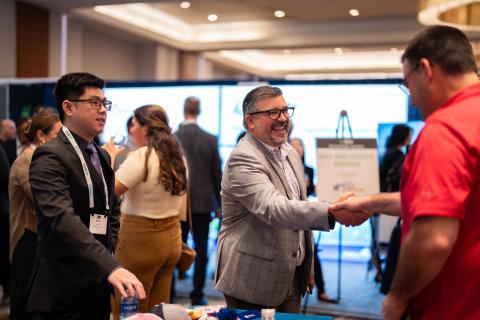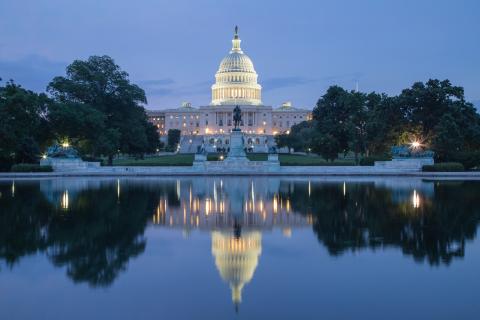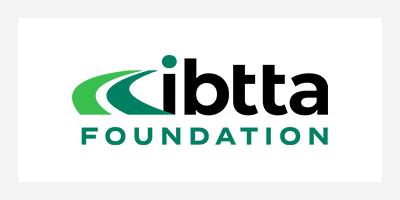- Home
- Opinion Leaders Educate and Build a Bigger Tent For Tolling
Stories
Opinion Leaders Educate and Build a Bigger Tent for Tolling


As the United States readies for another presidential election cycle and 2020 elections in general, there’s an important takeaway for advocacy groups that has nothing to do with partisan politics, or with specific party positions on the issues.
It’s actually the one thing the parties consistently have always had in common, across the policy spectrum and through the decades: in every epic battle of political wills, they’re all trying to build a bigger tent.
It’s a legitimate strategy: the middle ground, between your staunch supporters and your hardcore opponents, is where you find the support that it takes to win, whether the objective is a seat in Congress, a seat on the county commission or a set of policy decisions. Through that process, third-party validators play two important roles.
They’re a middle audience in their own right, bringing independent analysis and a unique policy focus that forces issue advocates to listen and adapt to sound arguments.
And, crucially, they’re the opinion leaders and amplifiers who can make or break a policy campaign when they talk about it with their own supporters.
Making the Case for Tolling
That’s why IBTTA has worked deliberately over the years to cultivate relationships with organizations that are one step removed from tolling and transportation, and will decide for their own reasons whether user financing is an important tool in their own policy toolbox. As IBTTA President Chris Tomlinson says, “I like to remind people that we’re not tolling for the sake of tolling….there’s always a reason for it. Tolling is a mechanism, and all of those reasons add up to mobility — trying to get people from where they are to where they want or need to be.”
Over the last couple of years, we’ve seen a steady drumbeat of studies that show third-party validators looking to tolling to help them address the issues on their own agendas:
- In June, the Competitive Enterprise Institute pointed to the $140 billion Congress has spent to bail out the Highway Trust Fund since 2008, calling for federal dollars to be targeted to the corners of the transportation system that need them most. That would mean eliminating federal spending outside highway freight corridors, “or at the very least allow federal capital funding to be redirected toward operations and maintenance activities”. To serve other parts of the system, the Institute said legislators should eliminate the federal ban on state tolling of interstate highway capacity and pilot mileage-based usage fees as an alternative to gas taxes.
- In April 2017, the Committee for Economic Development for the Conference Board put numbers to a familiar gap in state transportation funding: 43% of the funds pay for maintenance of 99% of the system, while 57% go into new projects covering the remaining 1%. “Although relying on motor fuel taxes worked well for decades, it now generates inadequate and declining revenues,” the report stated. “The United States needs a stable and predictable source of revenue that meets the operational and maintenance needs of our mature network of roads, bridges, and tunnels.”
- In August 2017, the Congressional Research Service warned of a $20-billion annual shortfall in surface transportation program funding and looked at how Congress could turn to tolling to fill some of the gap. “At one extreme, it could simply encourage tolling pilot projects on Interstate System highways, of which relatively few have been implemented to date,” the CRS wrote. “At the other extreme, Congress might authorize states to toll federal-aid highways as they see fit, or even require that Interstate highway segments be converted to toll roads as they undergo reconstruction, eventually turning all Interstates into toll roads.”
None of those organizations will be in 100% agreement with the tolling industry’s policies and positions. That’s actually a strength of working with independent allies, validators and influencers. With multiple voices approaching the user finance challenge from multiple perspectives, we get closer to the day when the question is no longer whether to rely on tolling as a central tool in the funding toolbox, but how best to deploy it.
Over the Back Yard Fence
The role of opinion leaders and third-party validators doesn’t always get the emphasis it deserves in mass and social media campaigns aimed at shifting opinions or votes in the hundreds or thousands of thousands. But it isn’t a new approach, and the basic concept is still valid.
In the 1970s, mass communication students could expect to receive a crash course in the way U.S. campaign strategists defined and approached their audience in the 1950s. It was a very different time, but in one respect it sounded an awful lot like today: A dominant theme was that citizens wouldn’t easily trust editorial writers or policy spinmasters who were several steps removed from their neighborhood or workplace, from their own day-to-day reality.
But there were opinion leaders they trusted—the steady, knowledgeable colleague at work or, literally, the neighbor over the back yard fence. So communicators set out to cultivate and influence those opinion leaders.
Since then, technology has transformed mass communication, as surely as it continues to transform transportation. But two things remain the same: the need to win hearts and minds to secure any durable win, and the way people go about forming their views and building trust.
For the tolling industry, IBTTA continues to cultivate these important relationships.

Joining IBTTA connects you to a global community of transportation professionals, offering unmatched opportunities for networking, knowledge-sharing, and collaborative innovation in the tolling and transportation sector.
Follow IBTTA on social media for real-time updates on transportation trends and collaborative opportunities.





